-
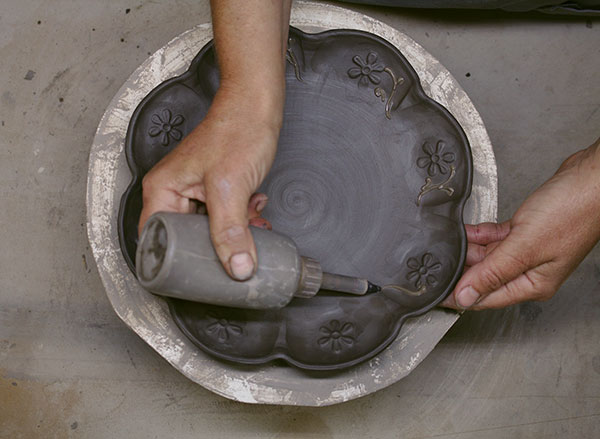 Altering and Stamping RimsMy interest in altering thrown shapes can be traced back to my days as a ceramics student, 25 years ago. Through the years I have developed techniques of pinching, pressing, and pulling with my finger
Altering and Stamping RimsMy interest in altering thrown shapes can be traced back to my days as a ceramics student, 25 years ago. Through the years I have developed techniques of pinching, pressing, and pulling with my finger -
 In the Studio: Stand-Alone GalleryI wanted a booth that looked like a gallery for participating in indoor fine craft shows so my pottery could be displayed in a setting that would easily let people envision it in their homes. I asked
In the Studio: Stand-Alone GalleryI wanted a booth that looked like a gallery for participating in indoor fine craft shows so my pottery could be displayed in a setting that would easily let people envision it in their homes. I asked -
 In the Studio: Smart and Thorough Record KeepingRecord keeping is essential for every business and every transaction. Good record keeping helps with managing costs, tax assessment, legal concerns, improving sales, and planning for future growth.
In the Studio: Smart and Thorough Record KeepingRecord keeping is essential for every business and every transaction. Good record keeping helps with managing costs, tax assessment, legal concerns, improving sales, and planning for future growth. -
 In the Studio: Processing Natural ClaysAs societies became more complex and businesses grew, clay processing became more and more industrialized. People began to purchase clay and other materials from suppliers because it was easier and su
In the Studio: Processing Natural ClaysAs societies became more complex and businesses grew, clay processing became more and more industrialized. People began to purchase clay and other materials from suppliers because it was easier and su -
 Editor's Note: Social PotteryTruth is, I’m not the most social-media savvy person. Quite frankly, I forget to even look it. I’m not sure what that says about me, other than I’m a bit of an introvert.
Editor's Note: Social PotteryTruth is, I’m not the most social-media savvy person. Quite frankly, I forget to even look it. I’m not sure what that says about me, other than I’m a bit of an introvert. -
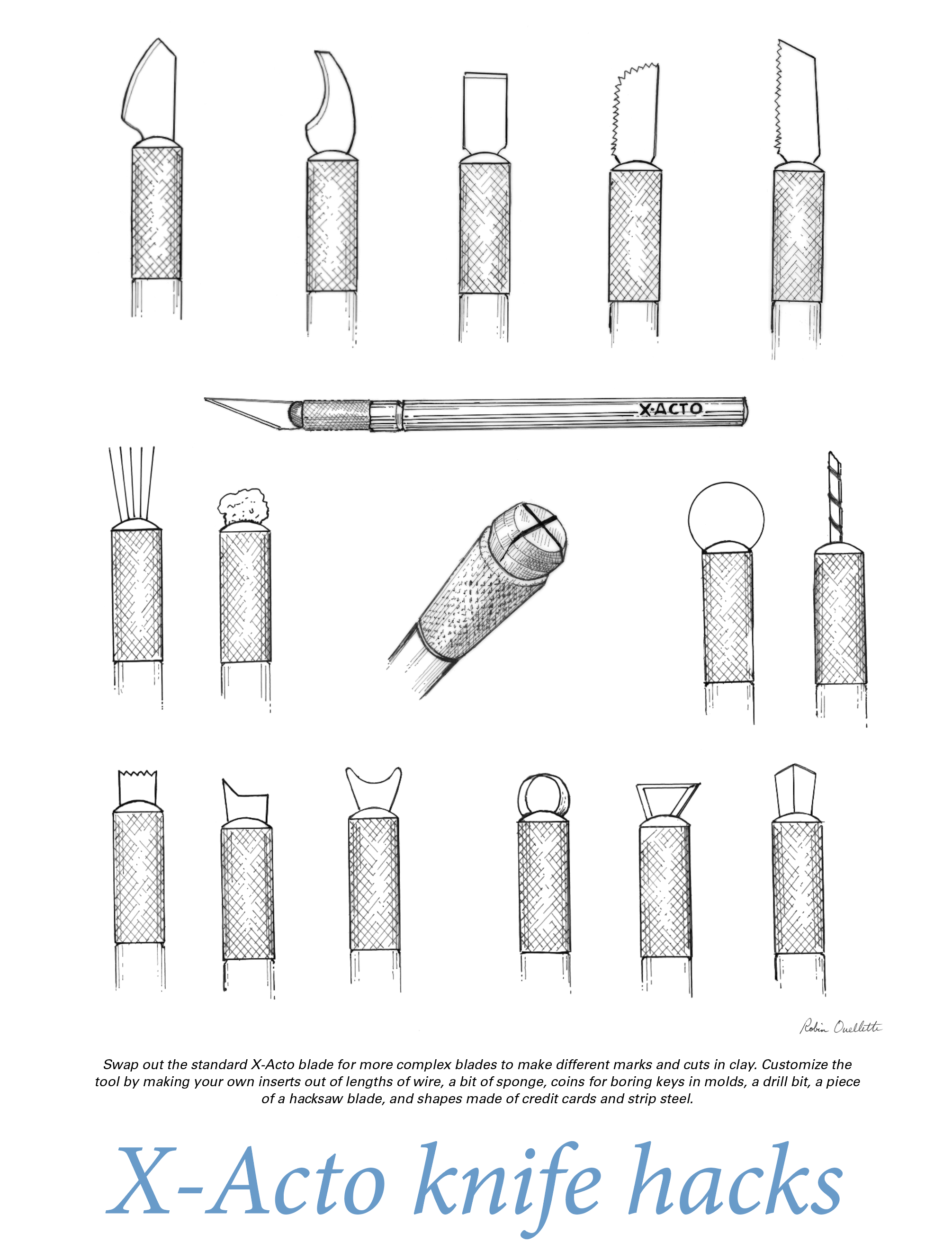 Pottery Illustrated: X-Acto Knife HacksSwap out the standard X-Acto blade for more complex blades to make different marks and cuts in clay. Customize the tool by making your own inserts out of lengths of wire, a bit of sponge, coins for bo
Pottery Illustrated: X-Acto Knife HacksSwap out the standard X-Acto blade for more complex blades to make different marks and cuts in clay. Customize the tool by making your own inserts out of lengths of wire, a bit of sponge, coins for bo -
 In the Potter's Kitchen: Creating a Winged BowlAfter so many years of making round pots on the wheel, I wanted some to be oval. Or better yet, egg shaped, in keeping with an old moniker. So I made a few oval-shaped bisque hump molds and started pl
In the Potter's Kitchen: Creating a Winged BowlAfter so many years of making round pots on the wheel, I wanted some to be oval. Or better yet, egg shaped, in keeping with an old moniker. So I made a few oval-shaped bisque hump molds and started pl -
 Kangaroo BowlsFrom time to time a student brings me a catalog page showing a bowl with an attached pocket for crackers. The image they always bring in is of a blocky, awkward, mass-produced slip-cast piece with a u
Kangaroo BowlsFrom time to time a student brings me a catalog page showing a bowl with an attached pocket for crackers. The image they always bring in is of a blocky, awkward, mass-produced slip-cast piece with a u -
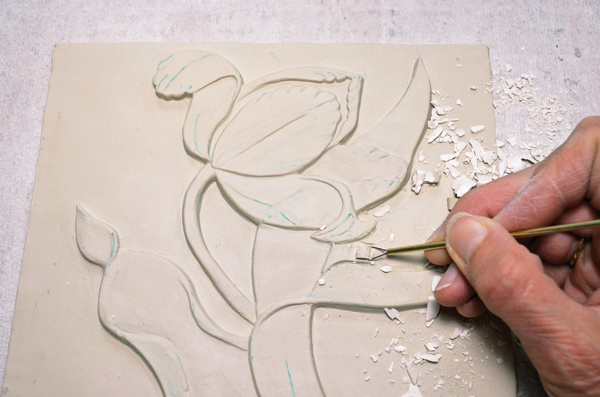 Beauty and Challenges in NatureMy fascination with botanicals grew out of the hours spent playing in the woods as a child and watching my father tend to his vegetable and flower gardens. Pottery has given me an opportunity to revis
Beauty and Challenges in NatureMy fascination with botanicals grew out of the hours spent playing in the woods as a child and watching my father tend to his vegetable and flower gardens. Pottery has given me an opportunity to revis -
 Transition to More PossibilitiesShortly after graduating from college, I came up with a line of pottery using thrown and altered forms, a black wash, and green and yellow glazes. Nine years later, after staying home to raise two kid
Transition to More PossibilitiesShortly after graduating from college, I came up with a line of pottery using thrown and altered forms, a black wash, and green and yellow glazes. Nine years later, after staying home to raise two kid -
 Smooth LinesJust as clay has a strong physical memory, one of my most vivid early memories of using pottery was eating ice cream from a heavily grogged stoneware bowl at my grandmother’s house, back in the 1980s.
Smooth LinesJust as clay has a strong physical memory, one of my most vivid early memories of using pottery was eating ice cream from a heavily grogged stoneware bowl at my grandmother’s house, back in the 1980s. -
 Unifying Form, Texture, and SurfaceThe evolution of my sprigged jars illustrates that form, surface, and texture have been very meaningful to my artistic development and research. While exploring robust femininity in porcelain and how
Unifying Form, Texture, and SurfaceThe evolution of my sprigged jars illustrates that form, surface, and texture have been very meaningful to my artistic development and research. While exploring robust femininity in porcelain and how -
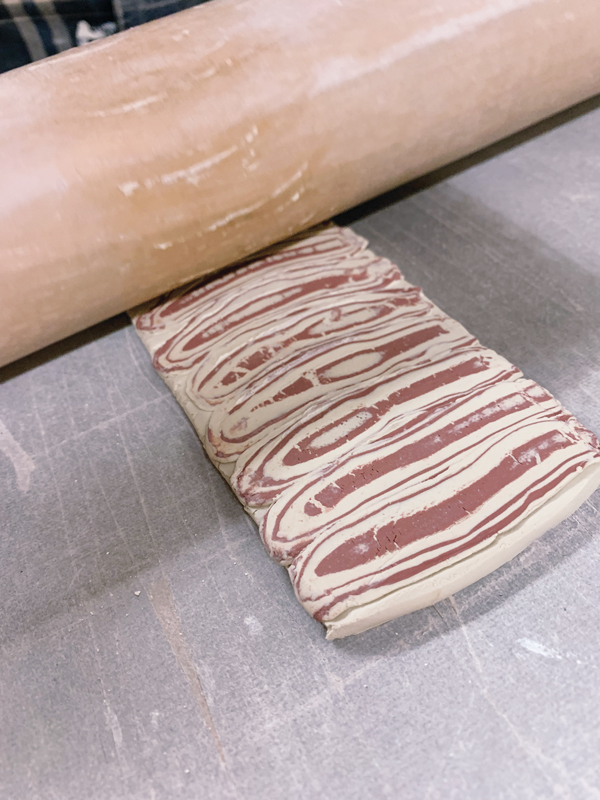 Makin' Bacon...Cups!I’ve always loved bacon, but never anticipated incorporating the idea of bacon into my work until after visiting the Texas hill country late last year. I met an artist there who was using stained clay
Makin' Bacon...Cups!I’ve always loved bacon, but never anticipated incorporating the idea of bacon into my work until after visiting the Texas hill country late last year. I met an artist there who was using stained clay -
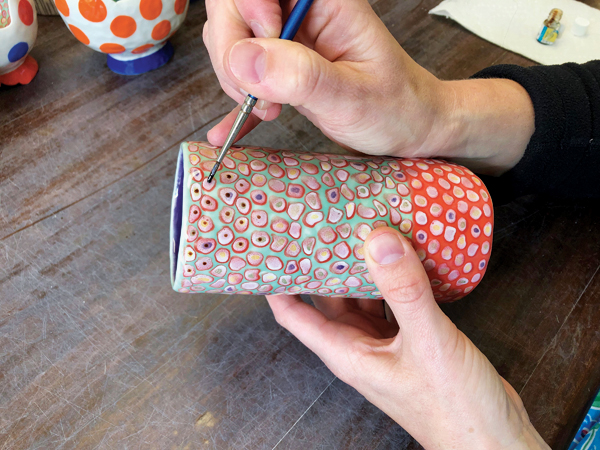 In the Studio: Dots GaloreI build pots to function as a canvas for my glazing. I pinch and coil my pots because this process is organic, slow, and methodical. Pinching leaves evidence of touch in the clay, providing a subtle t
In the Studio: Dots GaloreI build pots to function as a canvas for my glazing. I pinch and coil my pots because this process is organic, slow, and methodical. Pinching leaves evidence of touch in the clay, providing a subtle t -
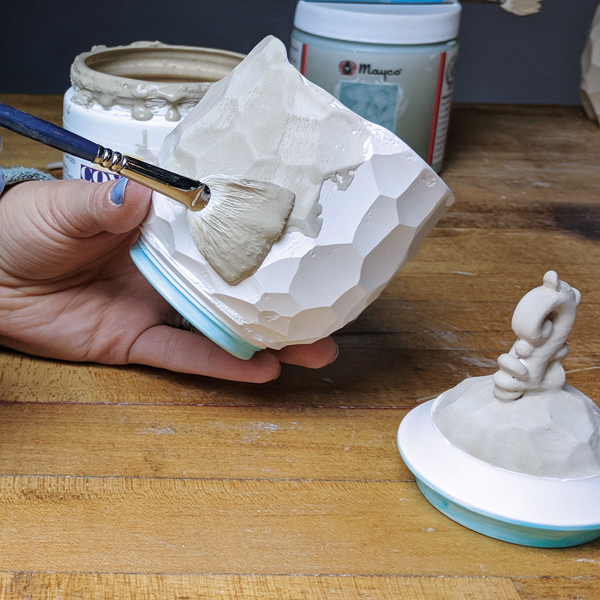 In the Studio: Commercial Glaze Tips and TricksLow-fire commercial glazes can be successfully layered to build effects and change the appearance of the individual glazes. Many low-fire glazes, like Mayco’s Foundations line, were made to self-level
In the Studio: Commercial Glaze Tips and TricksLow-fire commercial glazes can be successfully layered to build effects and change the appearance of the individual glazes. Many low-fire glazes, like Mayco’s Foundations line, were made to self-level -
 In the Studio: Creating Brighter SurfacesThe current ceramic art and pottery I create has an abundance of color and depth through layered underglazes and glazes. I was initially influenced heavily by the paintings my father had been making i
In the Studio: Creating Brighter SurfacesThe current ceramic art and pottery I create has an abundance of color and depth through layered underglazes and glazes. I was initially influenced heavily by the paintings my father had been making i -
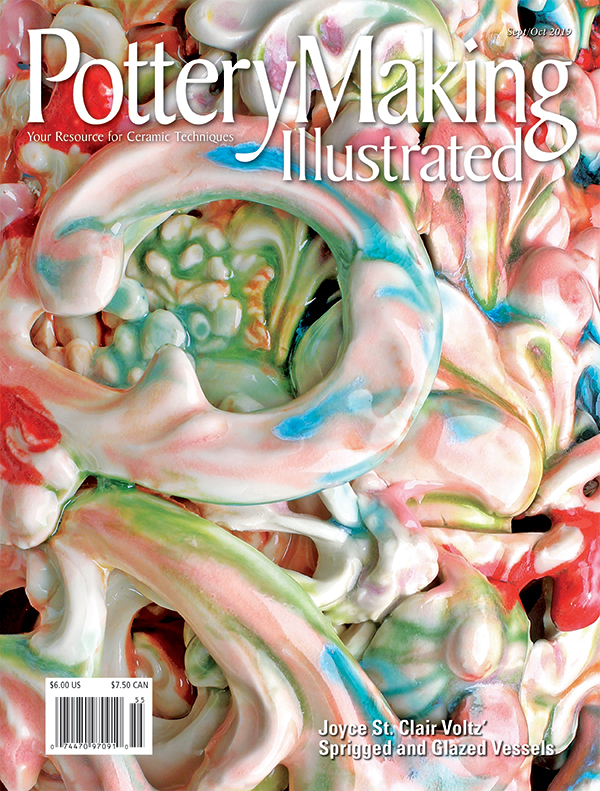 Editor's Note: Anatomy of a CoverOne of the best tasks of my job, and one of the most difficult, is choosing the cover for each issue. The cover is our one chance to make a first impression.
Editor's Note: Anatomy of a CoverOne of the best tasks of my job, and one of the most difficult, is choosing the cover for each issue. The cover is our one chance to make a first impression. -
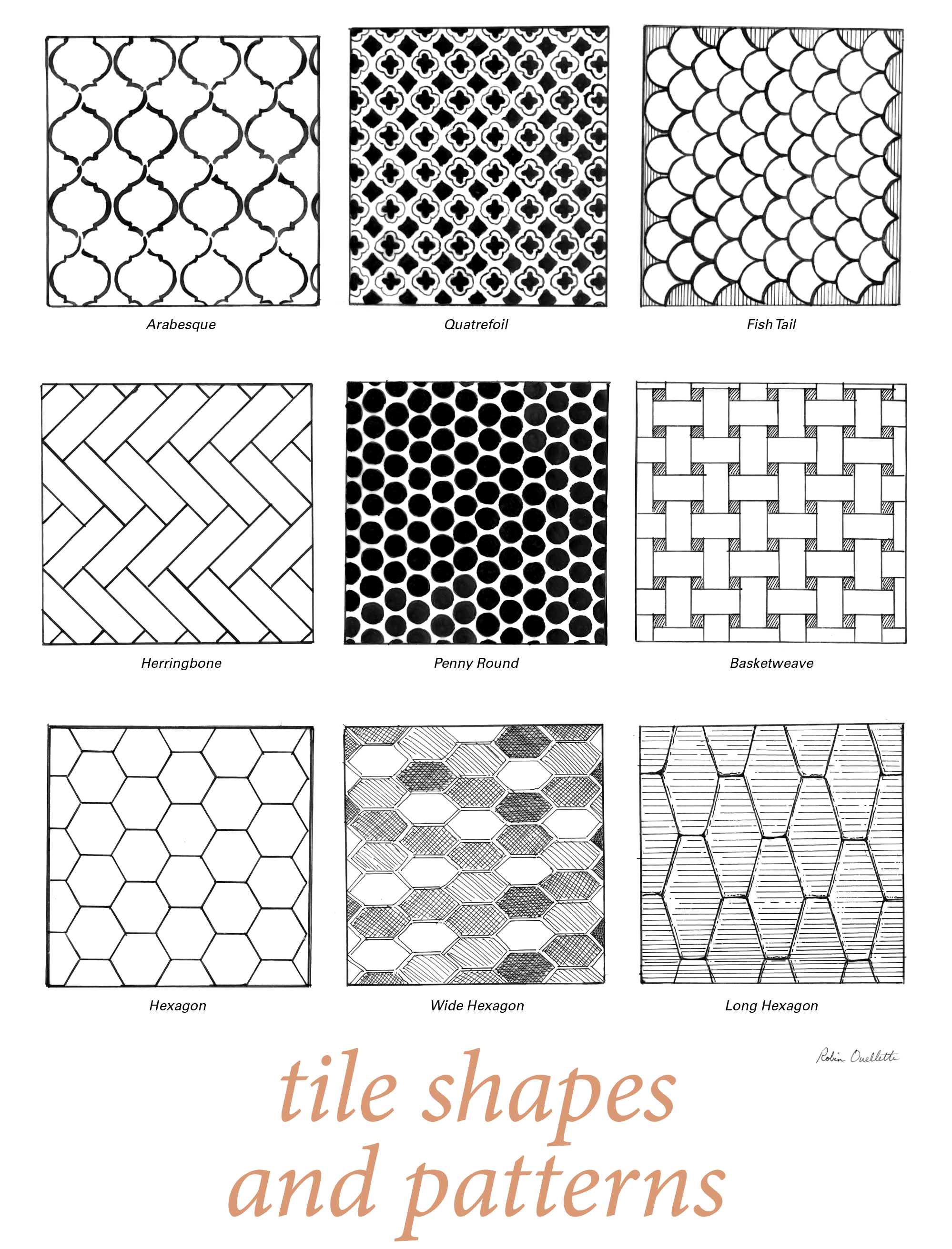 Pottery Illustrated: Tile Shapes and PatternsTiles shapes and patterns hand-drawn images. Drawn by Robin Ouellette.
Pottery Illustrated: Tile Shapes and PatternsTiles shapes and patterns hand-drawn images. Drawn by Robin Ouellette. -
 In the Potter's Kitchen: Fun Challenges in Mixing BowlsThe impetus for my dough bowls came from boredom. I had been making large serving trays using drape molds, but the predictability of molded forms had started to feel lifeless. I needed to inject some
In the Potter's Kitchen: Fun Challenges in Mixing BowlsThe impetus for my dough bowls came from boredom. I had been making large serving trays using drape molds, but the predictability of molded forms had started to feel lifeless. I needed to inject some -
 A Captivated ImaginationDrawing inspiration from these films, I’m primarily interested in their set and prop design. I address the monocultural phenomenon by referencing forms, shapes, patterns, and colors that allude to a c
A Captivated ImaginationDrawing inspiration from these films, I’m primarily interested in their set and prop design. I address the monocultural phenomenon by referencing forms, shapes, patterns, and colors that allude to a c
- «
- 21
- 22
- 23
- 24
- 25 (current)
- 26
- 27
- 28
- 29
- 30
- »
